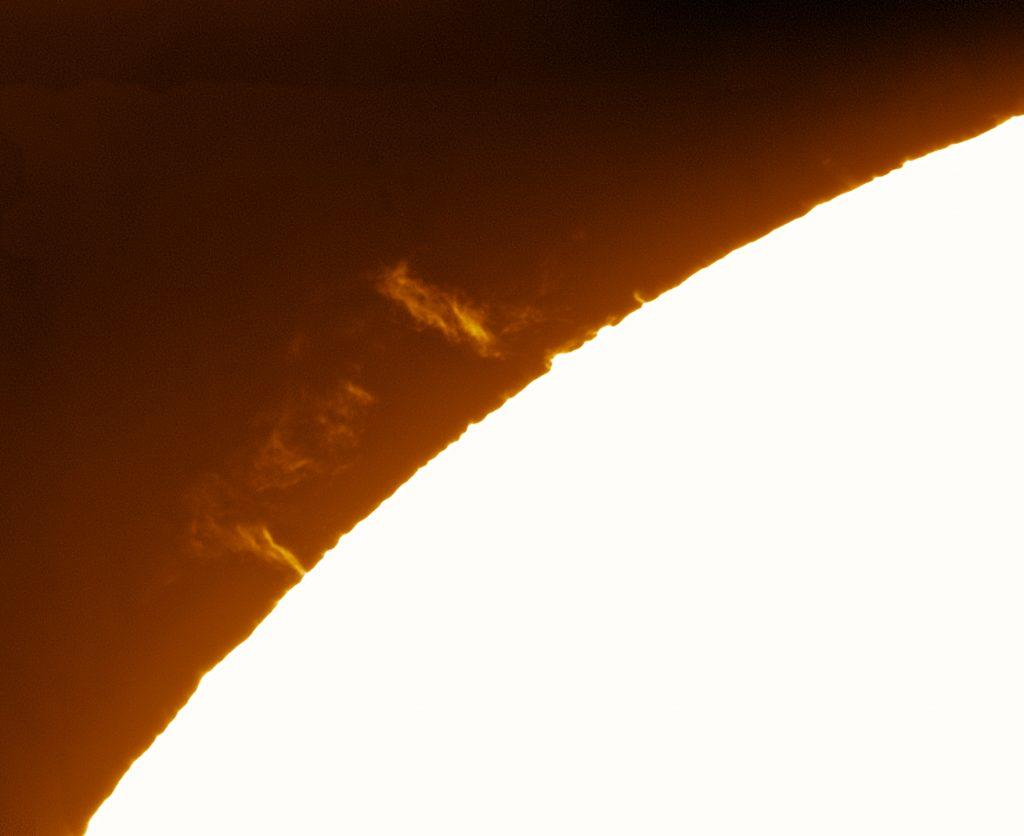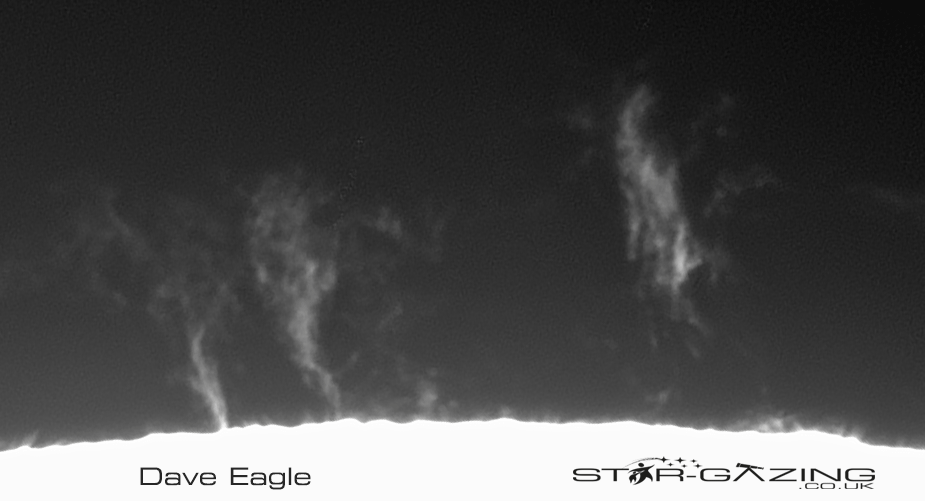On Sunday the 20th of April, I set the scope up to do some solar imaging.
There was a nice trio of prominences on edge of the disk the day before, so I thought these may have shown some nice changes since then.
One had faded completely, but there appeared to be quite a bit of detail in the remaining two. As I started to take images, I could see some rapid changes in their shapes, even during the short duration of the video capture. It immediately struck me that these features might make a nice solar animation if a series of images were taken over a period of time. The quick process shown below bore that assumption out, showing quite a lot of detail.

So starting at 07:23 am GMT I captured a 60 second avi.
I then re-centred the image and repeated the process over and over again.
I finally finished at 10:06 am GMT, a mega two and a half hour marathon.
As a result I ended up with saving 109 videos.
Then the fun really began.
I processed each captured avi with Autostakkert! to create a single image from each one.
I then sharpened each image, using Registax.
Using Photoshop I sharpened each one again, with further processing to reveal some of the fainter details.
Once this was accomplished, I loaded all the images into a single stack.
I then painstakingly aligned each layer with the one below.
One I was happy this was achieved as well as possible, I created a timeline to scroll through the images to create the time-lapse.
A few more tweaks were required to make sure that this was as smooth as possible.
When I was happy, I then exported the layers as an animated GIF.
This whole process took me more-or-less the whole day.
I’m never going to get that day back.
But BOY, as you can see below, it was definitely worthwhile making the effort.
The seeing was a bit iffy in a few of the images, but the activity can easily be seen.

